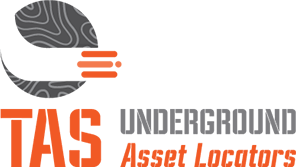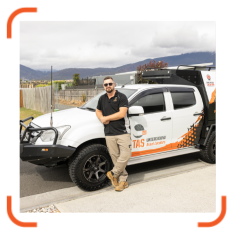
Frequently Asked Questions

What is underground asset location, and why is it important?
Underground asset location is the process of precisely determining the position of utilities and infrastructure hidden beneath the ground. It's crucial for safety, preventing accidents, minimizing project delays, and ensuring the integrity of existing assets. Accurate asset location helps avoid costly damage during construction and reduces the risk of utility service disruptions.
You should consider asset location services whenever you plan construction, excavation, or maintenance work that may involve digging near or around underground utilities, such as water pipes, and electrical cables. It's also important for verifying asset locations before design or renovation projects.
Modern underground asset location technology is highly accurate, with precision ranging from a few inches to a few feet. The accuracy depends on the equipment used, the type of utility, and the soil conditions. Ground-penetrating radar (GPR) and electromagnetic locators are commonly employed methods.
You can locate a wide range of underground assets, including water, gas, sewer, electrical, telecommunications, and cable TV lines, as well as drainage systems, pipelines, and more.
Yes, you may need permits or approvals from local authorities or utility companies before conducting asset location. It's essential to comply with regulations and ensure safety and legal compliance.
In many regions, underground asset location is legally required before commencing construction projects to ensure worker safety and protect existing infrastructure.
Failing to locate underground assets can lead to accidents, costly damage, service disruptions, legal liabilities, and project delays and even death. These risks can significantly impact your budget and timeline.
The cost varies depending on the scope of the project, the number of assets to be located, the location's complexity, and the equipment used. It's best to request a customized quote based on your specific needs.
Yes, you may need permits or approvals from local authorities or utility companies before conducting asset location. It's essential to comply with regulations and ensure safety and legal compliance.
Yes, you can request a quote from underground asset location providers. They will assess your project requirements and provide an estimate based on factors like size, location, and complexity.
The duration of asset location depends on the size of the area, the number of assets to be located, and the technology used. Smaller projects may take a few hours, while larger ones can span several days.
Yes, there are various methods, including , ground-penetrating radar (GPR) and tractor cam and WIN can as well as rodding, induction and GPR and trace wire. The choice of method depends on the specific project requirements and site conditions.
Common equipment includes electromagnetic locators, GPR devices, and tractor cam.
Yes, experienced asset locators can work in various terrain and weather conditions. They adapt their methods and equipment to ensure accurate results while prioritizing safety.
Yes, you should provide as much information as possible about your project, including site plans, utility records, and any known asset locations. This helps asset locators plan their work effectively.
Utility location typically involves using electromagnetic locators to find metallic utilities, while GPR can detect a broader range of materials and provide more detailed subsurface information.
Yes, asset location methods can often determine the depth of underground assets, which is valuable information for excavation planning and safety measures.
To ensure safety during asset location, communicate with the asset locator, follow their recommendations, and implement safety measures, such as site fencing and work area restrictions.
Immediately halt work, notify the asset locator, and inform relevant authorities. It's essential to assess the situation and develop a safe plan for handling the newly discovered assets.
Yes, it's crucial to mark the located assets accurately and take precautions to prevent damage during construction. This may include excavation techniques that minimize risk.
A certified plan locator is an experienced professional who specializes in accurately mapping and documenting underground assets. They ensure compliance with industry standards and best practices.
Yes, many regions have regulations and standards governing asset location to protect public safety and existing infrastructure. Compliance is essential to avoid legal issues.
Yes, accurate asset location can prevent accidental damage during construction, saving you time and money while maintaining service continuity.
Asset location for maintenance should be conducted as needed, typically before major maintenance or renovation projects. Regular checks can also be beneficial to update asset records.
You will receive a detailed location and depth for your asset location. We can also engage an engineering surveyor so that you can receive additional information about your underground assets.
We can get an experienced engineering surveyor involved to capture it.
Are you ready to embark on a project with confidence, knowing that underground assets are precisely located?
Don't wait any longer; take the first step toward success. Visit our Services Page to explore our comprehensive offerings or head to our Contact Page to request an obligation-free quote or schedule an appointment. Your project's success begins here.